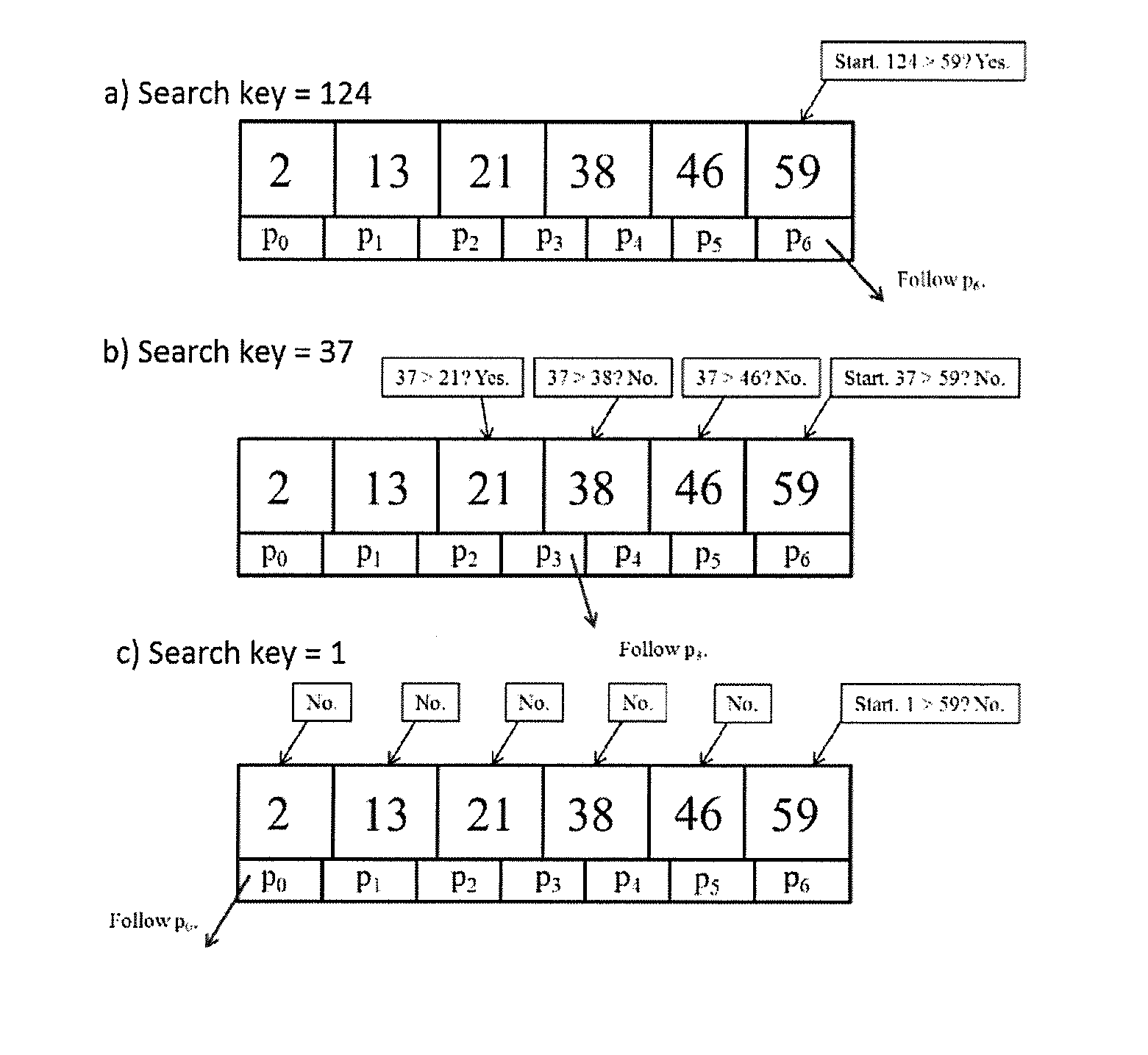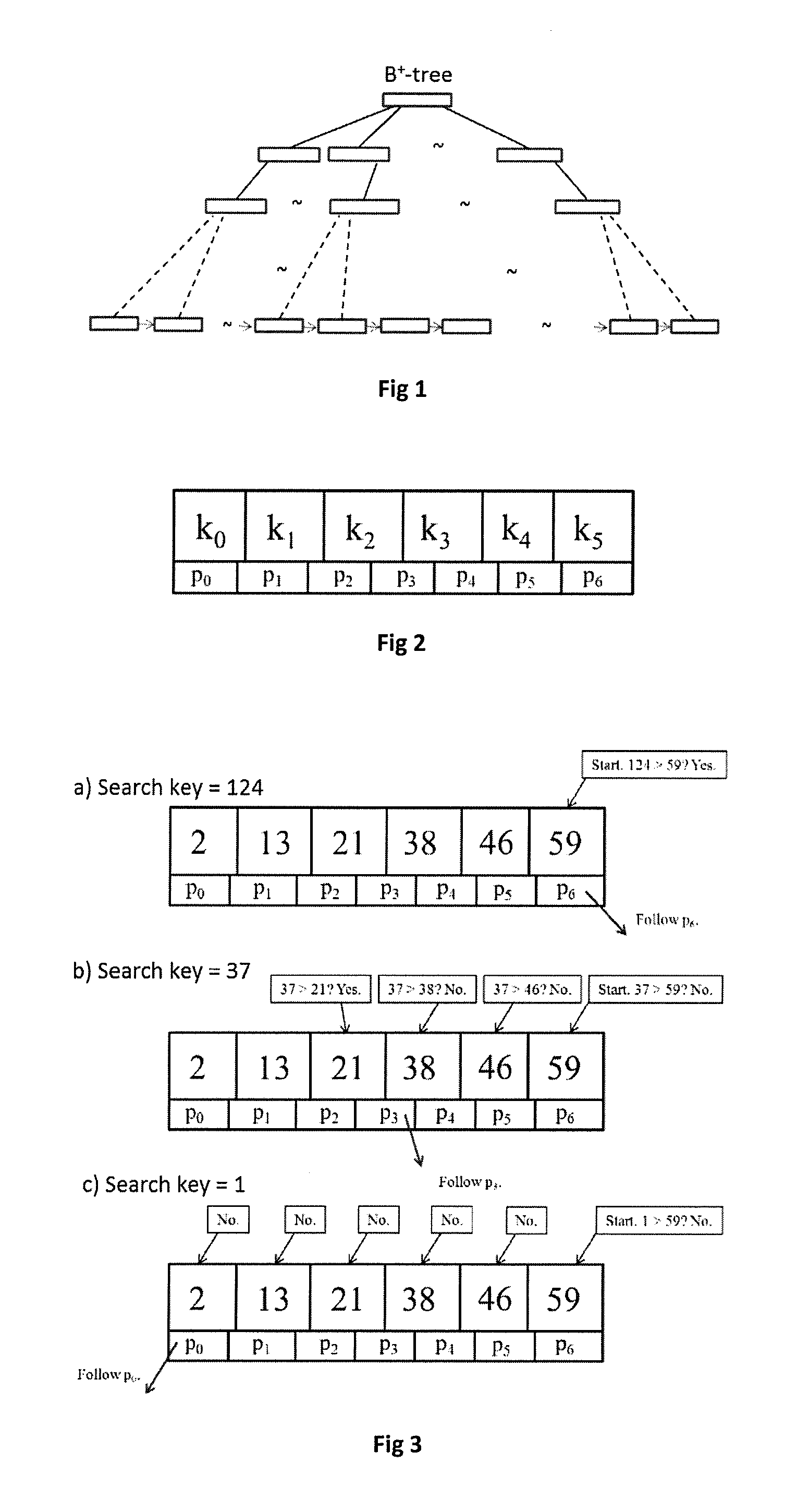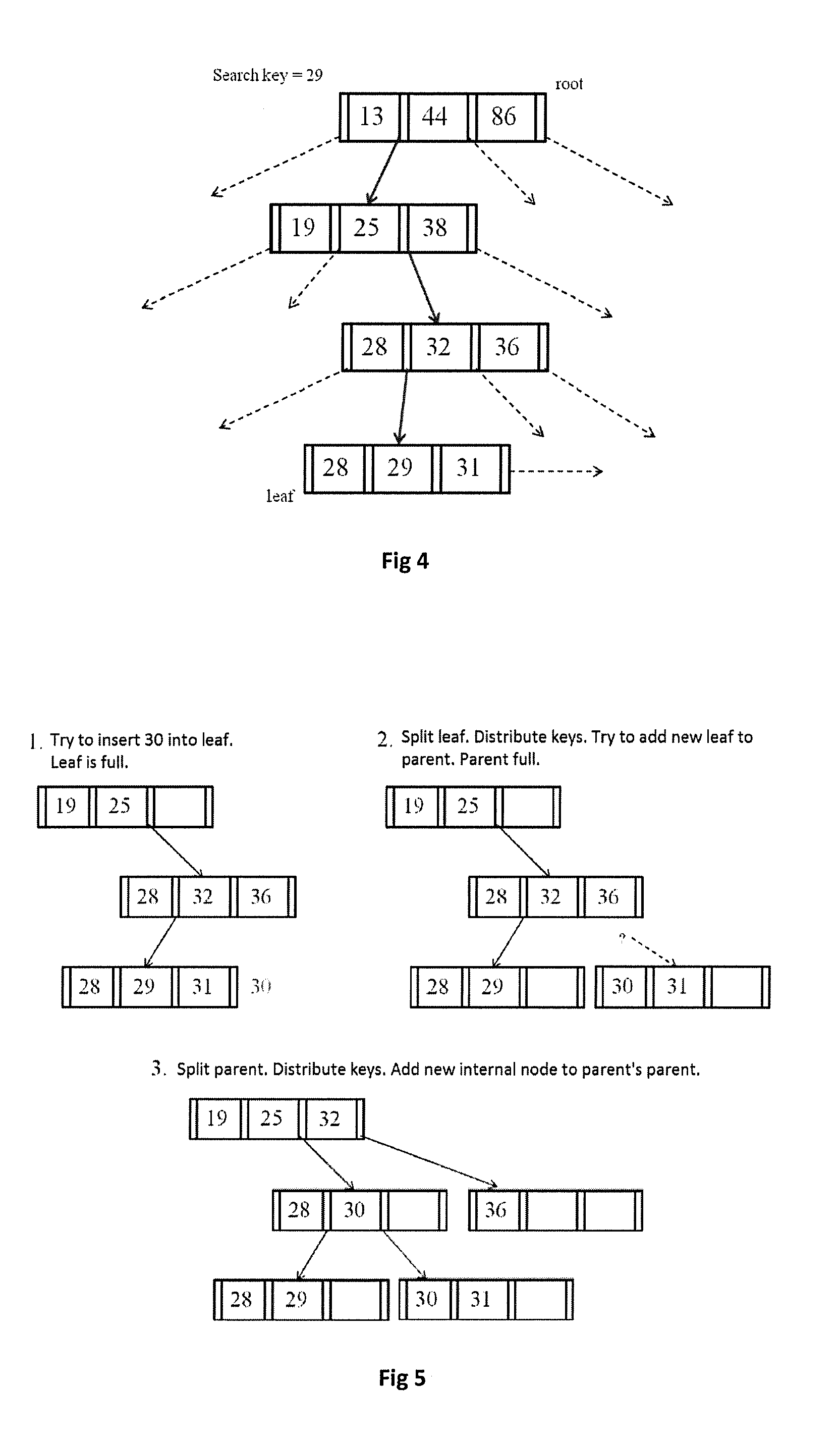Indexing based on key ranges
a key range and indexing technology, applied in the field of indexing methods based on key ranges, can solve the problems of ram-based databases not being suitable or possible for all situations, their own limits, etc., and achieve the effects of reducing memory space, improving overall system performance, and fast basic search
- Summary
- Abstract
- Description
- Claims
- Application Information
AI Technical Summary
Benefits of technology
Problems solved by technology
Method used
Image
Examples
Embodiment Construction
[0035]A new database indexing structure based on multi-level key ranges is provided with the present invention. It can work favorably for any large number of objects that are sortable based on indexing keys. It can be easily created and works well with ISAM or the B+-tree. In order to better understand the present invention, we will first describe the standard B+-tree, which we use to show how this invention can work with it.
[0036]The B+-tree is a multi-way search tree, meaning that each node in the tree can have many keys and many children. This is in contrast to something like a binary tree, where the number of children allowed per node is limited to two by the structure itself. Every B+-tree has a characteristic called the order or branching factor b that determines the number of keys and children any one internal node can have. If b is the order of the tree and in is the actual number of children of a particular node, then ┌b / 2┐≦m≦b. This applies to all internal...
PUM
 Login to View More
Login to View More Abstract
Description
Claims
Application Information
 Login to View More
Login to View More - R&D
- Intellectual Property
- Life Sciences
- Materials
- Tech Scout
- Unparalleled Data Quality
- Higher Quality Content
- 60% Fewer Hallucinations
Browse by: Latest US Patents, China's latest patents, Technical Efficacy Thesaurus, Application Domain, Technology Topic, Popular Technical Reports.
© 2025 PatSnap. All rights reserved.Legal|Privacy policy|Modern Slavery Act Transparency Statement|Sitemap|About US| Contact US: help@patsnap.com



